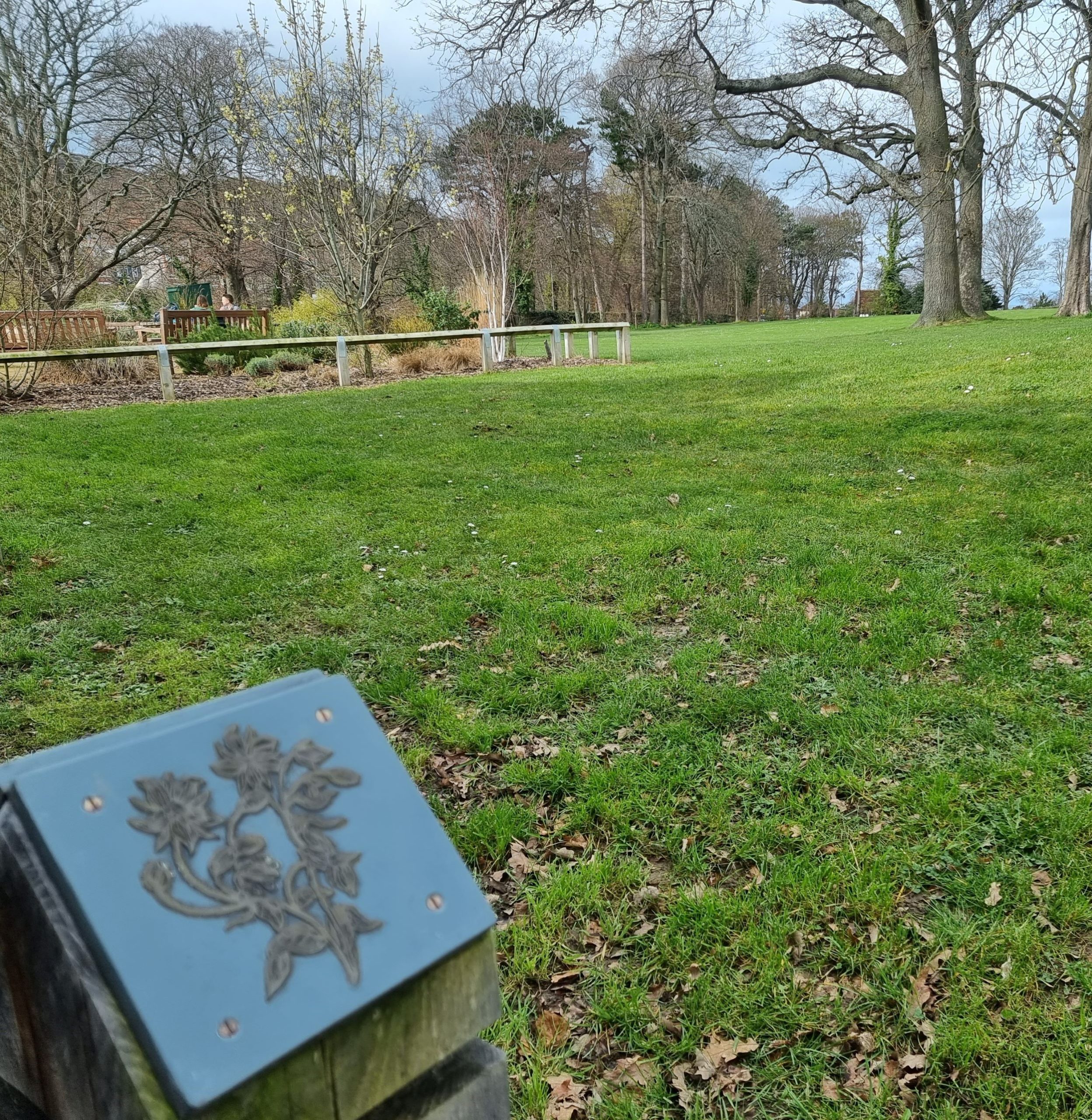Conwy Archive Service is lucky to have a sensory garden honouring violets and wild flowers in homage to a particular book in their collection. The archives includes the former reference library of the Llandudno and District Field Club as part of their collection. Dr Willoughby Gardner, the architect G.A Humphreys and the photographer A.H. Hughes founded the Club in 1906. The reference library covers topics from seaweed to spiders, via beetles, birds and bladder campions. Visitors to the Archive are welcome to browse the collection. The can find it on the rare book shelves in the searchroom.
A floral compendium of illustrations
One of my favourite books in the collection is Wild Flowers by Anne Pratt. The book was published in the early 1850s with a further volume in 1857. It contains beautifully printed illustrations and detailed descriptions of meadow and woodland flowers.
The previous owner of the copy was Edith Davies of New Brighton, Cheshire and she annotated her copy in great detail. The endpapers include nature notes such as a list of which plants particular butterflies lay eggs on and which plants bees love. The list begins with ‘Borage first of all’, which anyone who enjoys the countryside today will tell you is still true.

There is a blank page before each illustration, and on these Edith has written extensive notes about wild flowers.
Extensive notes and literary quotes
The entry for sweet violet reads ‘5 petals of unequal shape and size. The lower one drawn out into a kind of spur. 5 sepals and stamens are connected together, two of them with curious ear-like appendages. Flowers – purplish colour, nodding. On the stem are bracts. Leaves grow at base of the plant, with rather long stalks and are broadly heart-shaped.’
Literary quotations follow the descriptive notes. From The Sicilian Captive by Felicia Hemans: ‘Gleaming like amethysts in the dewy moss’. Another quote, by Tennyson: ‘The smell of violets hidden in the green / Pour’d back into my empty soul and frame / The times when I remembered to have been / Joyful and free from blame’.


Anne Pratt’s text tells us, amongst other things, that ‘The modern Arabians compare the eyelids to a Violet dropping dew; and the odour of its half-hidden flower makes it a fit emblem of modesty…This flower was formerly cultivated, for medicinal uses, in great quantities at Stratford-upon-Avon, and the syrup of Violets is still used by chemists to detect the presence of an acid or alkali’.
Drawn from a sketch, regrown as brass rubbings in the sensory garden
A grant in 2020 from the Thomas Howell’s Education Fund for North Wales enabled Anne Pratt’s illustrations to enter a new incarnation. Brass rubbings of Pratt’s illustrations of wild flowers adorn the sensory garden outside Conwy Culture Centre. People with sensory difficulties are therefore able to easily trace the twelve illustrations with their fingers. The brass facsimiles are mounted on posts outside the building. The create a link between the Archive’s collection and the local landscape.

Part of the trail, with the Sensory Garden and Bodlondeb Park.
The brass rubbing trail gives a focus to activities for people with varying physical and educational abilities and provides an outdoor education opportunity which can tie in with wellbeing and physical activity. During the Covid lockdown in 2020 people could still access a small part of the archive outside in the garden.


Written by Lucinda Smith, Archifydd / Archivist
Edited by Jake Doyle, Blog Coordinator for Explore Your Archive, MLitt Archives and Records Management Student and Archive Assistant at Suffolk Archives



